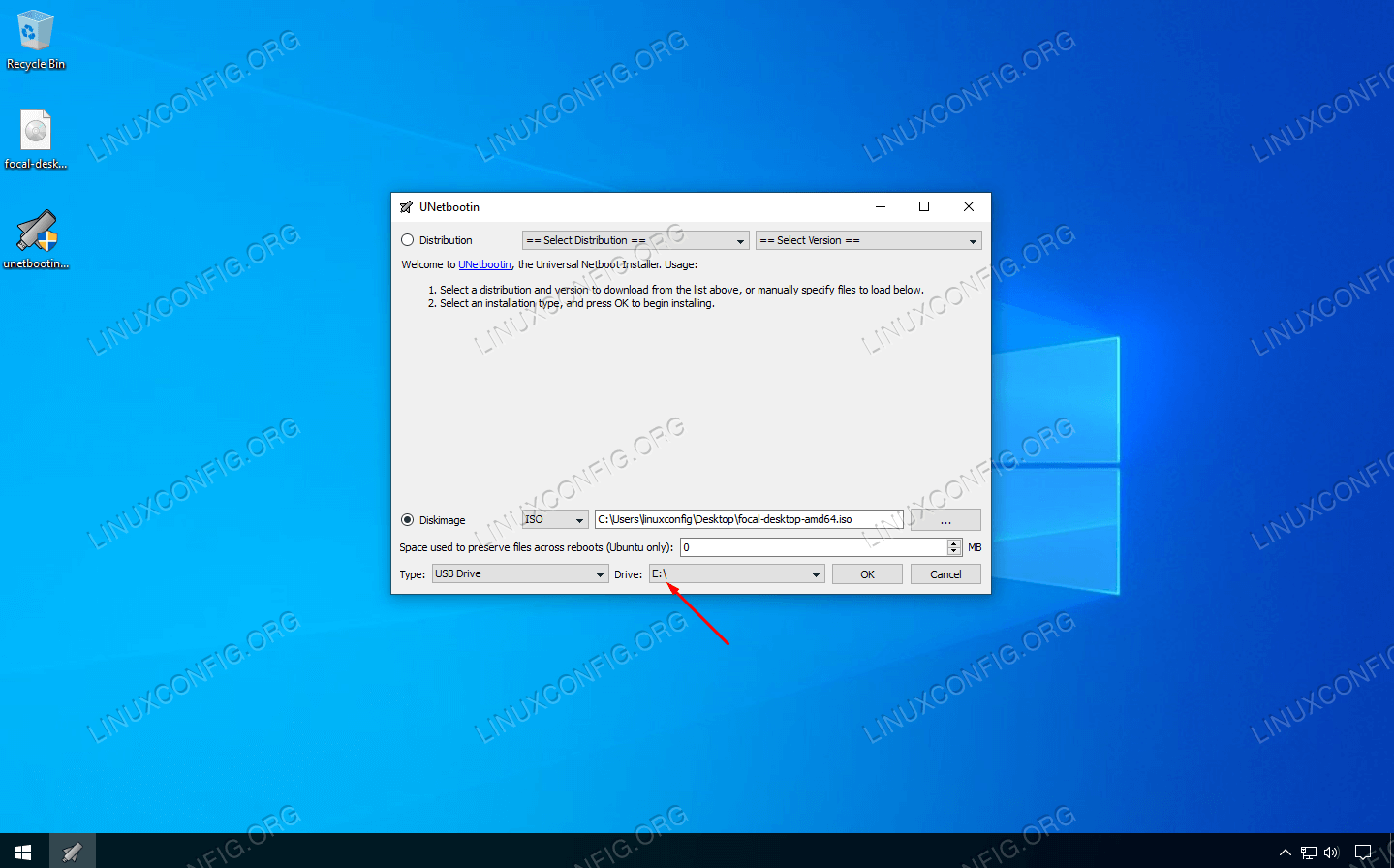

- #Create windows 10 bootable usb from ubuntu how to
- #Create windows 10 bootable usb from ubuntu install
- #Create windows 10 bootable usb from ubuntu software
I have talked a lot about creating bootable USB of Linux in Windows.
#Create windows 10 bootable usb from ubuntu how to
Choose to boot from the drive associated with your USB Ubuntu installer.Brief: This tutorial shows you how to create a bootable Windows 10 USB in Linux with and without a GUI tool called WoeUSB.Press the required combination of keys to bring up the boot screen.When booting the computer up, you should see a message somewhere on the screen that tells you to press a specific key or combination of keys to change what drive the computer boots up from.
#Create windows 10 bootable usb from ubuntu install
Connect the USB drive to the computer you want to install Ubuntu on and then power the computer on. Click "Close" when Rufus is completed creating the bootable USB Ubuntu installer, and then remove the thumb drive from that computer. 
The creation of the bootable USB Ubuntu installer will be complete when the green progress bar at the bottom of the Rufus application is entirely green, and when the message below the progress bar says Ready.
Click "Start" the Rufus USB Installer begins creating the bootable USB drive. Choose "Write in ISO Image Mode (Recommended)," and then click "OK." Another warning appears that all current information on your USB storage drive will be erased. Another message appears warning you that the image you selected is an ISOHybrid image.  Click "Yes" to download any additional Syslinux files. A Download Required message may appear, prompting you to download additional Syslinux files to complete creating this file. Navigate to the location where you downloaded the Ubuntu installer, click the ISO associated with the Ubuntu installer, and then click "Open." Where you previously selected FreeDOS in the Format Options section now says "ISO Image. Click the disc icon to the right of FreeDOS. Select "FreeDOS" in the drop-down to the right of Create a Bootable Disk Using. Ensure that Quick Format, Create a Bootable Disk Using, and Create Extended Label and Icon Files have the boxes to the left of them checked under Format Options. Enter a new name for the USB storage drive in the New Volume Label field if you want to change the name from what it is currently. Select the Cluster Size drop-down, and then click "4096 bytes (Default).". Choose the File System drop-down, and then click "FAT32 (Default).". Click the Partition Scheme and Target System Type drop-down, and then select "MBR partition scheme for BIOS or UEFI.". Click the Device drop-down, and then select the name of the USB storage drive you just formatted. Navigate to where the Rufus USB Installer application is located on your computer, and launch Rufus. Format a USB drive that has more space on it than the size of the install file you'll be moving to it.
Click "Yes" to download any additional Syslinux files. A Download Required message may appear, prompting you to download additional Syslinux files to complete creating this file. Navigate to the location where you downloaded the Ubuntu installer, click the ISO associated with the Ubuntu installer, and then click "Open." Where you previously selected FreeDOS in the Format Options section now says "ISO Image. Click the disc icon to the right of FreeDOS. Select "FreeDOS" in the drop-down to the right of Create a Bootable Disk Using. Ensure that Quick Format, Create a Bootable Disk Using, and Create Extended Label and Icon Files have the boxes to the left of them checked under Format Options. Enter a new name for the USB storage drive in the New Volume Label field if you want to change the name from what it is currently. Select the Cluster Size drop-down, and then click "4096 bytes (Default).". Choose the File System drop-down, and then click "FAT32 (Default).". Click the Partition Scheme and Target System Type drop-down, and then select "MBR partition scheme for BIOS or UEFI.". Click the Device drop-down, and then select the name of the USB storage drive you just formatted. Navigate to where the Rufus USB Installer application is located on your computer, and launch Rufus. Format a USB drive that has more space on it than the size of the install file you'll be moving to it. #Create windows 10 bootable usb from ubuntu software
The Rufus USB Installer is free, open-source software that lets you ultimately take the Ubuntu ISO installer and create the bootable USB Ubuntu installer. Download the Rufus USB Installer from this location.Ubuntu Steps to Create a Bootable USB Ubuntu Installer in Windows







 0 kommentar(er)
0 kommentar(er)
